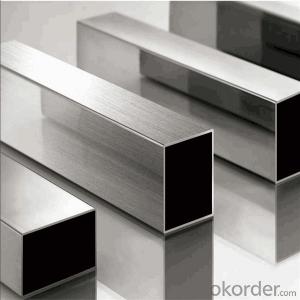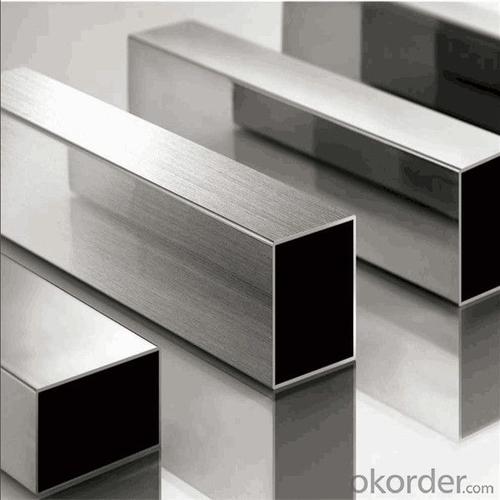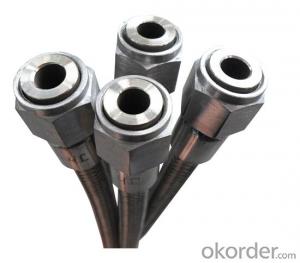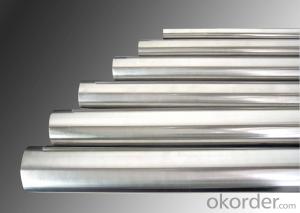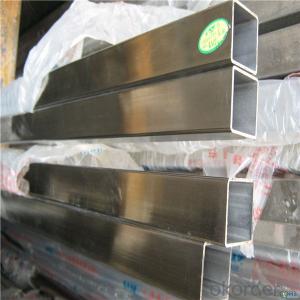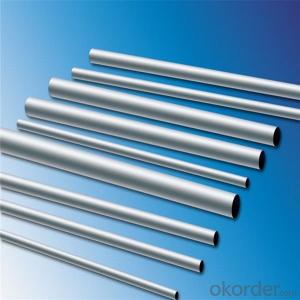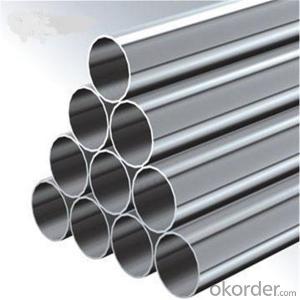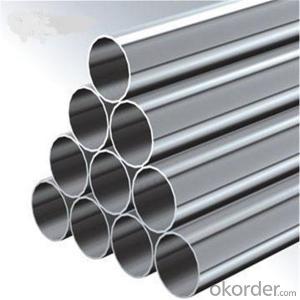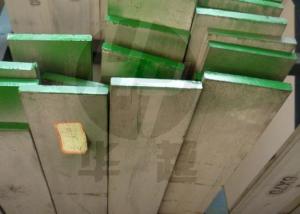904L Super Duplex Stainless Steel Pipe in Wuxi ,China
- Loading Port:
- Shanghai
- Payment Terms:
- TT OR LC
- Min Order Qty:
- 2 m.t.
- Supply Capability:
- 25000 m.t./month
OKorder Service Pledge
OKorder Financial Service
You Might Also Like
Specification
Own Brand Name | SENYU | Business Type | manufacturer |
standard specifications | ASME/ANSI, JIS, DIN, EN,GOST | Product Range | Stainless steel seamless pipes and tubes |
Export Percentage | 60% | Export Markets | Middle east, south and east Asia, Russia, South America |
Sales Volume | 300,000,000 (300million) | Primary Competitive Advantages | High quality, Favourite price; Prompt Delivery |
No. of Production Lines | 18 | Investment on Manufacturing Equipment | 20,000,000(20million) |
NO.of R&D Staff | 6 | NO.of Total Staff | 300 |
Annual production capacity | 11000TONS | No. of Engineers | 20 |
Year Established | 1992 | Monthly Capacity | 1200 tons |
Pipe Billet | Tsingshan,Yongxing,Baosteel,Jiuli | Factory Size in Square Meters | 33333 SQ.M |
Certificates | ISO9001:2000; DNV,GOST | Current Principal Customers: | sinopec, CNPC, nuclear plant |
Type of Machinery | cold drawn machine, cold rolling equipment, broaching machine, automatic solution annealing furnaces, straighteners, test equipment | Capital | WENZHOU SENYU STEEL PIPES FACTORY 8,500,000RMB
|
904L is a fully austenitic structure, and the general content of high molybdenum austenitic stainless steel, 904L is not sensitive to the precipitation of the ferrite and the alpha phase.
Application
1. petroleum, petrochemical equipment, such as petrochemical equipment in the reactor, etc..
2. Storage and transportation equipment, such as heat exchangers, etc..
3. Power plant flue gas desulfurization device, the main use of the site are: absorption tower body, flue, file door, interior, spray system, etc..
4. Organic acid treatment system of scrubber and fan.
5. Seawater treatment plant, sea water heat exchanger, paper industry equipment, sulfuric acid, nitric acid equipment, acid, pharmaceutical industry and other chemical equipment, pressure vessels, food equipment.
6 .Pharmaceutical factory: centrifuge, reactor, etc..
7. Plant food: cans of soy sauce, cooking wine, salt, and dressing equipment.
8. Most suitable for dilute sulfuric acid and strong corrosive medium
Surface Finish :
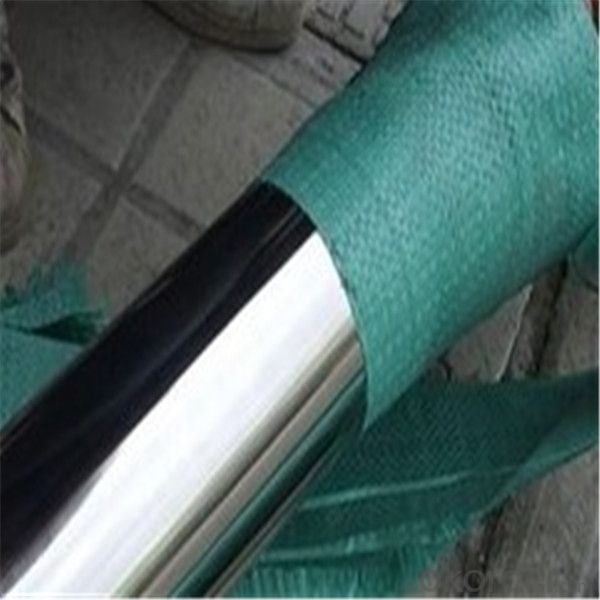
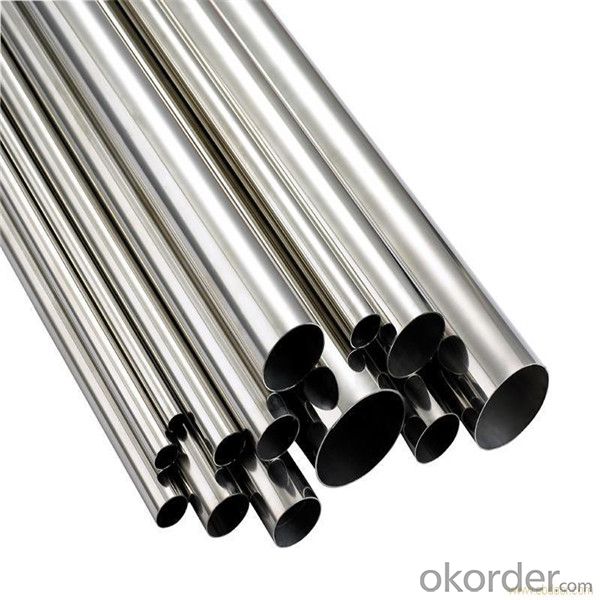
- Q: How do you calculate the pressure rating of stainless steel pipes?
- To calculate the pressure rating of stainless steel pipes, you need to consider several factors. First, you need to know the material properties of the stainless steel being used, such as its yield strength and tensile strength. These properties can be obtained from material data sheets or by conducting mechanical tests. Next, you need to determine the wall thickness of the stainless steel pipe. This can be measured directly or obtained from the pipe manufacturer's specifications. It is important to ensure that the wall thickness is uniform along the entire length of the pipe. Once you have the material properties and the wall thickness, you can use the appropriate formula or calculation method to determine the pressure rating. There are various codes and standards available that provide guidance on calculating pressure ratings for different types of pipes, such as the ASME B31.3 code for process piping or the ASME B31.1 code for power piping. These codes typically consider factors such as the allowable stress of the material, safety factors, and design considerations. The formulas or calculation methods provided in these codes take into account the material properties, wall thickness, pipe diameter, and other relevant parameters to calculate the maximum allowable pressure that the stainless steel pipe can withstand. It is important to note that the pressure rating of stainless steel pipes may also depend on other factors, such as the temperature of the fluid being transported, the corrosive nature of the fluid, and any potential external loads or stresses on the pipe. Therefore, it is recommended to consult the applicable codes, standards, or a qualified engineer to ensure accurate calculations and to consider all relevant factors when determining the pressure rating of stainless steel pipes.
- Q: Are stainless steel pipes suitable for power generation facilities?
- Yes, stainless steel pipes are suitable for power generation facilities. Stainless steel is a highly durable and corrosion-resistant material, making it ideal for use in power generation facilities where there may be exposure to high temperatures, pressure, and corrosive environments. Stainless steel pipes can withstand the harsh conditions found in power plants, such as those used in thermal, nuclear, and renewable energy generation. Additionally, stainless steel has excellent heat resistance properties, making it suitable for transporting hot gases or fluids within power generation systems. The ability of stainless steel pipes to resist corrosion and maintain their structural integrity over time ensures the reliability and longevity of power generation facilities.
- Q: Can stainless steel pipes be used for transportation of hazardous materials?
- Yes, stainless steel pipes can be used for the transportation of hazardous materials. Stainless steel is known for its excellent corrosion resistance and durability, making it suitable for safely containing and transporting various hazardous substances. Additionally, stainless steel pipes can withstand high temperatures and pressures, providing further reliability for transporting dangerous materials.
- Q: What is the average cost of stainless steel pipes?
- The average cost of stainless steel pipes can vary depending on various factors such as the size, grade, and supplier. On average, stainless steel pipes can range from $5 to $20 per foot. However, it is recommended to obtain quotes from multiple suppliers to get a more accurate and current price.
- Q: Can stainless steel pipes be used for oil and gas pipelines?
- Certainly, oil and gas pipelines can utilize stainless steel pipes. Stainless steel possesses remarkable resistance to corrosion, rendering it an apt material for the conveyance of oil and gas, which may encompass corrosive components. Stainless steel pipes exhibit the capacity to endure elevated temperatures and pressures, thereby rendering them optimal for oil and gas applications. Furthermore, stainless steel exhibits durability and longevity, thereby diminishing the likelihood of pipeline system leaks or malfunctions. The utilization of stainless steel pipes for oil and gas pipelines guarantees the integrity and dependability of the infrastructure, safeguarding both environmental preservation and public safety.
- Q: What is the difference between 17-4PH and 15-5PH stainless steel pipes?
- The chemical composition and mechanical properties are the main factors that distinguish 17-4PH and 15-5PH stainless steel pipes. Regarding 17-4PH stainless steel, it is a precipitation-hardening grade that comprises 17% chromium, 4% nickel, 4% copper, and a small amount of molybdenum. This grade is renowned for its exceptional combination of high strength and resistance to corrosion. Additionally, it can be subjected to heat treatment to achieve varying levels of hardness, making it suitable for diverse applications that necessitate strength and corrosion resistance. On the contrary, 15-5PH stainless steel is also a precipitation-hardening grade but possesses a slightly different composition. It consists of 15% chromium, 5% nickel, and 3-5% copper. This grade offers good strength, toughness, and corrosion resistance, comparable to 17-4PH stainless steel. However, it exhibits a higher level of toughness and better resistance to stress corrosion cracking. In terms of mechanical properties, 17-4PH stainless steel generally exhibits greater strength and hardness compared to 15-5PH stainless steel. It can be subjected to heat treatment to achieve a wide range of hardness levels, including high strength and hardness suitable for demanding applications. On the other hand, 15-5PH stainless steel, although still possessing good strength, typically does not undergo the same extent of heat treatment as 17-4PH. Both 17-4PH and 15-5PH stainless steel pipes find common usage in industries such as aerospace, oil and gas, and chemical processing, where their combination of strength and corrosion resistance proves highly advantageous. The choice between the two grades depends on specific application requirements, with 17-4PH offering greater strength and hardness versatility, while 15-5PH provides better resistance to stress corrosion cracking and improved toughness.
- Q: What is the weight of stainless steel pipes?
- The weight of stainless steel pipes may differ based on factors such as their length, diameter, and wall thickness. Due to its high density, stainless steel pipes generally have a greater weight in comparison to pipes manufactured from alternative materials. Typically, the weight of stainless steel pipes is quantified in kilograms or pounds per meter or per foot. It is crucial to acknowledge that the weight can vary depending on the particular grade of stainless steel employed during the pipe fabrication process.
- Q: Can stainless steel pipes be used in high-pressure applications?
- Stainless steel pipes, being renowned for their exceptional corrosion resistance, durability, and strength, find their suitability in high-pressure applications. They serve as an optimal choice for handling fluids or gases under high pressure owing to their ability to endure extreme conditions without deformation or failure, which is attributed to their high tensile strength. Moreover, stainless steel pipes exhibit consistent properties even in the face of temperature fluctuations, both high and low, ensuring their reliability and effectiveness in high-pressure scenarios.
- Q: Can stainless steel pipes be used for sewage disposal?
- Yes, stainless steel pipes can be used for sewage disposal. Stainless steel is a highly durable and corrosion-resistant material, making it suitable for handling sewage and wastewater. It is resistant to various chemicals and acids commonly found in sewage, ensuring the pipes' longevity and minimizing the risk of leaks or breaks. Additionally, stainless steel pipes have smooth inner surfaces, which helps prevent the buildup of waste and inhibits the growth of bacteria or other harmful substances. Overall, stainless steel pipes are a reliable and appropriate choice for sewage disposal systems.
- Q: Are stainless steel pipes suitable for high-temperature applications?
- Indeed, high-temperature applications are well-suited for stainless steel pipes. Renowned for its remarkable resistance to corrosion, impressive strength, and ability to withstand heat, stainless steel is highly regarded. Its structural integrity and performance remain intact even under extreme temperatures. Stainless steel pipes find utility in numerous industries like power generation, petrochemical, oil and gas, and food processing, where elevated temperatures are prevalent. Moreover, the durability and extensive lifespan of stainless steel pipes make them a dependable option for high-temperature applications.
Send your message to us
904L Super Duplex Stainless Steel Pipe in Wuxi ,China
- Loading Port:
- Shanghai
- Payment Terms:
- TT OR LC
- Min Order Qty:
- 2 m.t.
- Supply Capability:
- 25000 m.t./month
OKorder Service Pledge
OKorder Financial Service
Similar products
Hot products
Hot Searches
Related keywords
